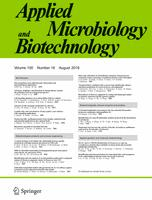 A biotechnology journal has retracted a 14-year-old review after an investigation concluded that the authors had plagiarized from numerous sources.
A biotechnology journal has retracted a 14-year-old review after an investigation concluded that the authors had plagiarized from numerous sources.
The last author of the paper — which has been cited 289 times, according to Thomson Reuters Web of Science — told us the authors took a few lines from other reviews, and unintentionally left off the references.
In June 2011, the same author was denied a prestigious fellowship after an anonymous plagiarism allegation was filed against him.
Here’s the retraction notice in Applied Microbiology and Biotechnology for “The nitrile-degrading enzymes: current status and future prospects:”
The article has been retracted at the request of the Editor-in-Chief, as it contains portions of other authors’ writings on the same topic in other publications, without sufficient attribution to these earlier works being given. The principal authors of the paper acknowledged that text from background sources was mistakenly used in this article without proper reference to the original source. Upon investigation carried out according to the Committee on Publication Ethics guidelines, it has been found that the authors have duplicated or rephrased parts from the following articles:
- The section under “Distribution of nitrile degrading enzyme systems” (Appl Microbiol Biotechnol article, page 34) contains similar text of the article “Biochemistry and biotechnology of mesophilic and thermophilic nitrile metabolizing enzymes“ from Extremophile (1998), 2, 207–216; pp. 207–8.
- The section under “Ferric NHases” (Appl Microbiol Biotechnol article, p. 37), contains verbatim text of the article “Metalloenzyme nitrile hydratase: Structure, regulation, and application to biotechnology” Nature Biotechnology (1998), 733–736. pp. 733;
- The section under “Ferric NHases” (Appl Microbiol Biotechnol article, p. 37), contains verbatim text of the article “Nitrile hydrolases” Curr Opin Chem Biol (2000), 4, 95–102; pp. 96.
- The section under “Cobalt NHases” (Appl Microbiol Biotechnol article, p. 38), contains verbatim text of the article “Metalloenzyme nitrile hydratase: Structure, regulation, and application to biotechnology” Nature Biotechnology (1998), 733–736. pp. 734.
- The article appears to contain paraphrased text from various parts of the article “Microbial Metabolism of Nitriles and Its Biotechnological Potential” Journal of Scientific & Industrial Research Vol. 58, December 1999, pp 925–947.
- Tables 1, 2 & 3 in the article have similarities with the tables in the article “Microbial Metabolism of Nitriles and Its Biotechnological Potential” Journal of Scientific & Industrial Research Vol. 58, December 1999, pp 925–947.
- Fig. 3 (p. 38) of the Appl Microbiol Biotechnol article has similarities with Figure 1 of the article “Metalloenzyme nitrile hydratase: Structure, regulation, and application to biotechnology” Nature Biotechnology (1998), 733–36; pp.734.
- Fig. 4 (p. 40) of the AMB has similarities with Figure 3 of the article “The catalytic mechanism of amidase also involves nitrile hydrolysis” FEBS Letters (1998), 439, 325–328; pp. 326
The authors have agreed to the retraction.
The last author of the paper, Uttam Chand Banerjee, told us in an email:
We only enriched the review by collecting informations from various journals, however, during this process few lines were taken from some reviews and due to oversight, mentioning the references of some of the papers are inadvertently missed. This is simply unintentional.
He added:
The journal people contacted me and I explained them the unintentional and [unpremeditated] nature of the work and apologised for this mistake.
Banerjee argued that the paper has not affected other researchers’ work, since it is a review rather than a novel research paper.
The Indian Express reported last month that Banerjee, who is based at National Institute of Pharmaceutical Education and Research (NIPER) in Mohali, Punjab, India, was
denied the Tata Innovation Fellowship in 2011 by the Department of Biotechnology after different plagiarism charges surfaced against him.
Banerjee acknowledged to us that he was denied the prestigious fellowship by the Department of Biotechnology, which is part of the Indian government. At the time, said Banerjee, the Department of Biotechnology set up a two-member committee to investigate the allegations. Banerjee has sent us this document, which outlines the decision made by the committee.
The report concludes that the accusations were made on the basis of papers that were already investigated earlier by Banerjee’s institution, NIPER, and that the papers in question were not quoted in Banerjee’s application. It goes on to state:
…we do not think the present complaint is tenable. We find no ground to deny the Tata Fellowship to Prof U. C. Banerjee.
Despite the conclusions of the inquiry, Banerjee told us he still did not receive the fellowship. And he noted that he was aware of the retraction, contrary to what was reported by The Indian Express.
We’ve reached out to the journal for further clarifications, and will update the post with anything else we learn.
Like Retraction Watch? Consider making a tax-deductible contribution to support our growth. You can also follow us on Twitter, like us on Facebook, add us to your RSS reader, sign up on our homepage for an email every time there’s a new post, or subscribe to our new daily digest. Click here to review our Comments Policy. For a sneak peek at what we’re working on, click here.
Similarities vs same
This is intriguing. Verbatim from the retraction note “authors have duplicated or rephrased parts”, duplication is considered plagiarism, but is rephrasaing or paraphrasing also considered plagiarism ? I am not sure if the above references were never cited in the text or cited, but not in same context ?
Also intriguing is similarities of tables. Considering this is a review article and NOT a Research article, tables would be obviously reconstructed from other articles with new information or reinterpretation of same information. Is this also plagiarism ?
Several papers like this exist where previously published work is re-published in a modified form in review articles.
I think its quite grey and we need more defined guidelines.